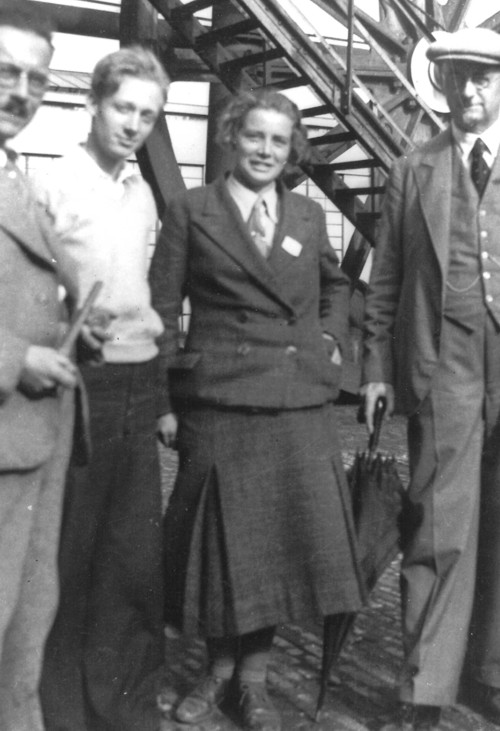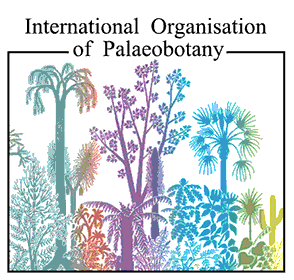Emily Dix was born on 21 May 1904 into a farming family on the Gower Peninsula of South Wales, UK. At the age of 18 she won a scholarship to the University College Swansea, and in 1925 graduated with a first class honours degree in geology. She then went on to study at Swansea for an MSc with Arthur Trueman, with whom she continued to work for the next five years on various projects. In 1930, she was appointed lecturer in geology at Bedford College in London, an institution that had been established in 1849 specifically to support women’s education, and she stayed there for the rest of her working life.
Dix’s initial work was on the non-marine bivalves of the South Wales Coalfield, a subject that was Trueman’s main specialism. Trueman had been a pioneer in developing stratigraphical theory, in particular recognising the need to separate biostratigraphy from lithostratigraphy. He developed his ideas initially working on Jurassic ammonite faunas but, on moving to Swansea in 1920, he transferred his knowledge and methods to the study of Carboniferous non-marine bivalves. Dix quickly absorbed Trueman’s approach to using fossils for stratigraphical correlation, as is evident from her early papers.

Dix remained interested in non-marine bivalves throughout her working life. However, she soon realised that plant fossils also had considerable biostratigraphical potential but their usefulness was not being fully realised, at least in Britain. The leading British stratigraphical palaeobotanist, Robert Kidston, had died in 1924 and his successor at the British Geological Survey, Robert Crookall, appeared to be struggling to produce the sort of stratigraphical resolution that his continental colleagues such as Jongmans and Gothan were producing.
Dix’s major contribution was to apply Trueman’s approach to biostratigraphy to the floras. This essentially involved establishing a series of biozones through the succession, defined exclusively on the ranges of the fossils. The concept of ‘zones’ for Carboniferous plant fossils was not entirely novel: Paul Bertrand, for instance, had referred to vegetation zones in the French coalfields, but these still tended to be defined by the rock units as much as the fossil content. Dix’s innovation was to divorce completely the definition of the zones from the definition of the rock units in which they were found. She used stratigraphical range charts for the first time in palaeobotany, where the stratigraphical distribution of each species was represented by a bar or line drawn parallel to the lithostratigraphical section, thereby allowing the overall patterns in species distributions to be assessed objectively. This revolutionary approach to assessing the biostratigraphy of plant fossils resulted in a series of now classic papers based mainly on the South Wales Coalfield, and later some preliminary studies on the coalfields of the English Midlands.
The work rapidly brought her to the attention of other Carboniferous palaeobotanists, and she soon established close friendships with colleagues from abroad, notably Wilhelmus Jongmans, Walter Gothan, Paul Bertrand, Armand Renier and William Darrah. In 1935, she attended the Second International Carboniferous Congress in Heerlen (The Netherlands), where she delivered papers on Carboniferous biostratigraphy and was clearly at the international forefront of the field.

The outbreak of armed conflict in Europe in 1939 came at the height of her career, and completed disrupted her scientific activities. Along with the rest of Bedford College, she was evacuated to Cambridge, leaving behind her collections of fossils and scientific reprints. The latter was lost through bombing, but most of her fossils survived and her collection is now divided between the Hunterian Museum (Glasgow), Amgueddfa Cymru – National Museum Wales (Cardiff) and the Sedgwick Museum (Cambridge). Although Dix continued to publish papers during the war they were mainly on relatively minor aspects of coal geology (e.g. the presence of boulders in coal seams) and plant biostratigraphy is rarely mentioned.
Towards the end of the war, Dix suffered a mental breakdown. Whether this was a result of the pressures induced by the war or to a more fundamental medical condition is not known. However, it resulted in the end of her scientific career. By 1946, her condition had so deteriorated that her sister Margaret had taken over her affairs, and she was moved to a mental hospital run by the Quakers in the City of York. Here she remained until her death in 1972.
Dix revolutionised plant biostratigraphy. Unfortunately in Britain, nobody took up her work after the war and it was not until the late 1970s that her techniques were used again. Elsewhere in Europe, however, her approaches were adopted and can be seen in many of the papers presented at the International Carboniferous Congresses held at Heerlen during the 1950s and early 1960s. There can be little doubt that, if her career had not been so tragically cut-short by illness, she would have continued to work with her continental colleagues, especially Jongmans. It takes little imagination to believe that she would have been at the forefront of investigating the vexed problem of the Westphalian – Stephanian boundary for which plant biostratigraphy ultimately proved so crucial, and which has been critical in unravelling the whole story of tropical forests and climate change during Late Carboniferous (Pennsylvanian) times.
For more information about the life and work of Emily Dix see: Burek, C. V. & Cleal, C. J. (2005) The life and work of Emily Dix (1904-1972). In: Bowden, A. J., Burek, C. V. & Wilding, R (ed.) History of palaeobotany: selected essays. Geological Society of London, Special Publication, 241, 181-196. (PDF available to purchase)
Dr. Chris Cleal, Cardiff, UK.
